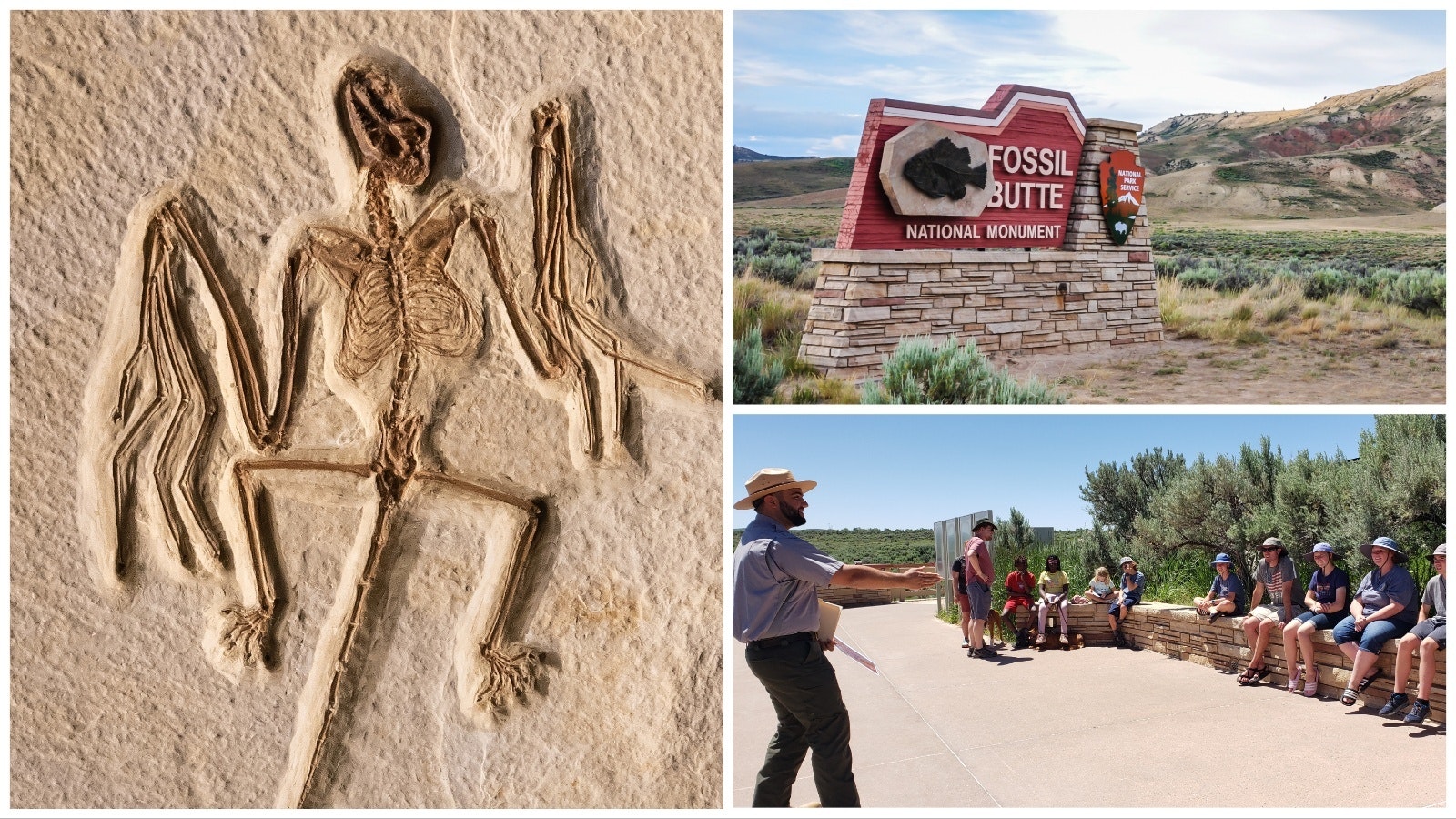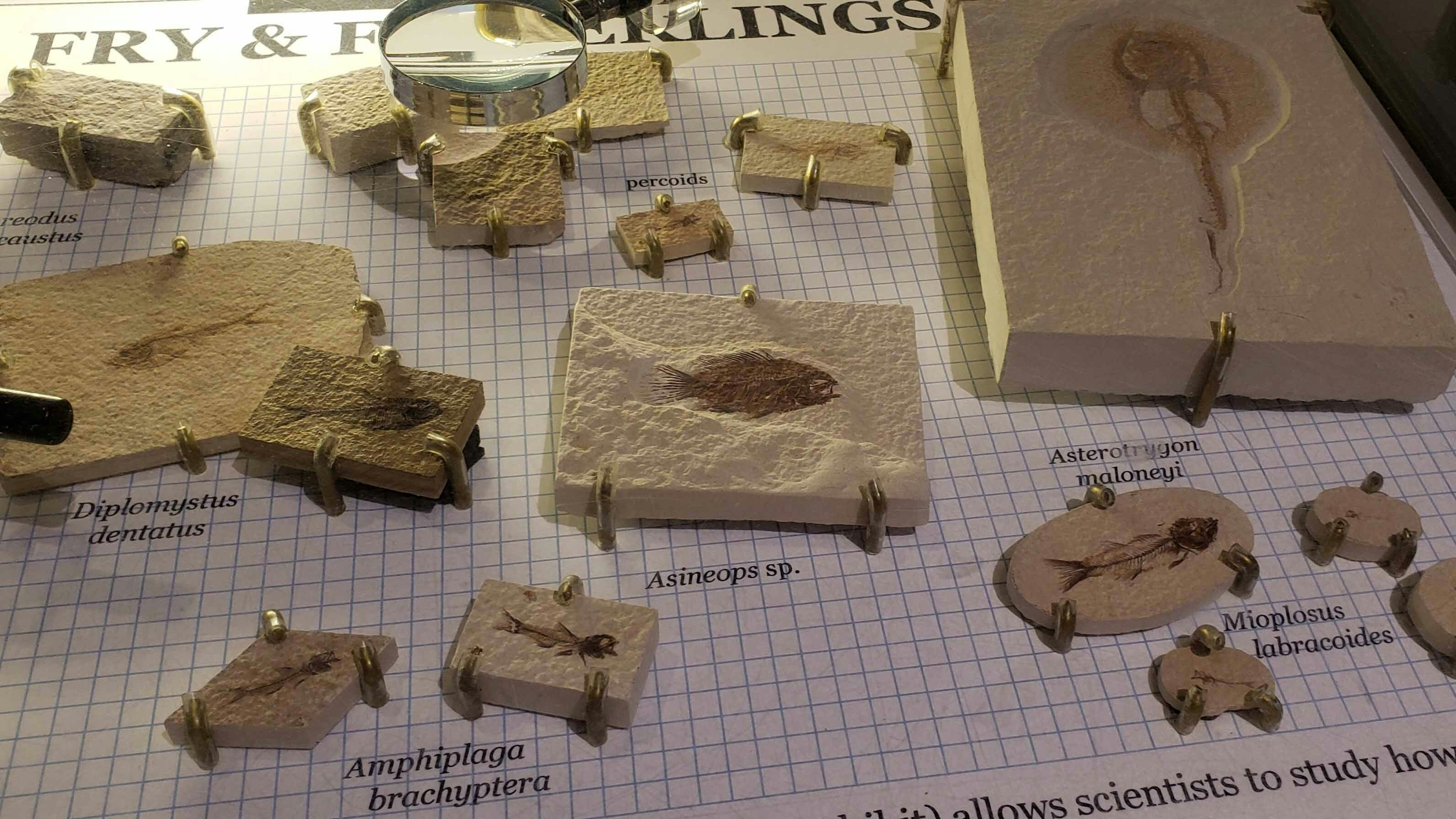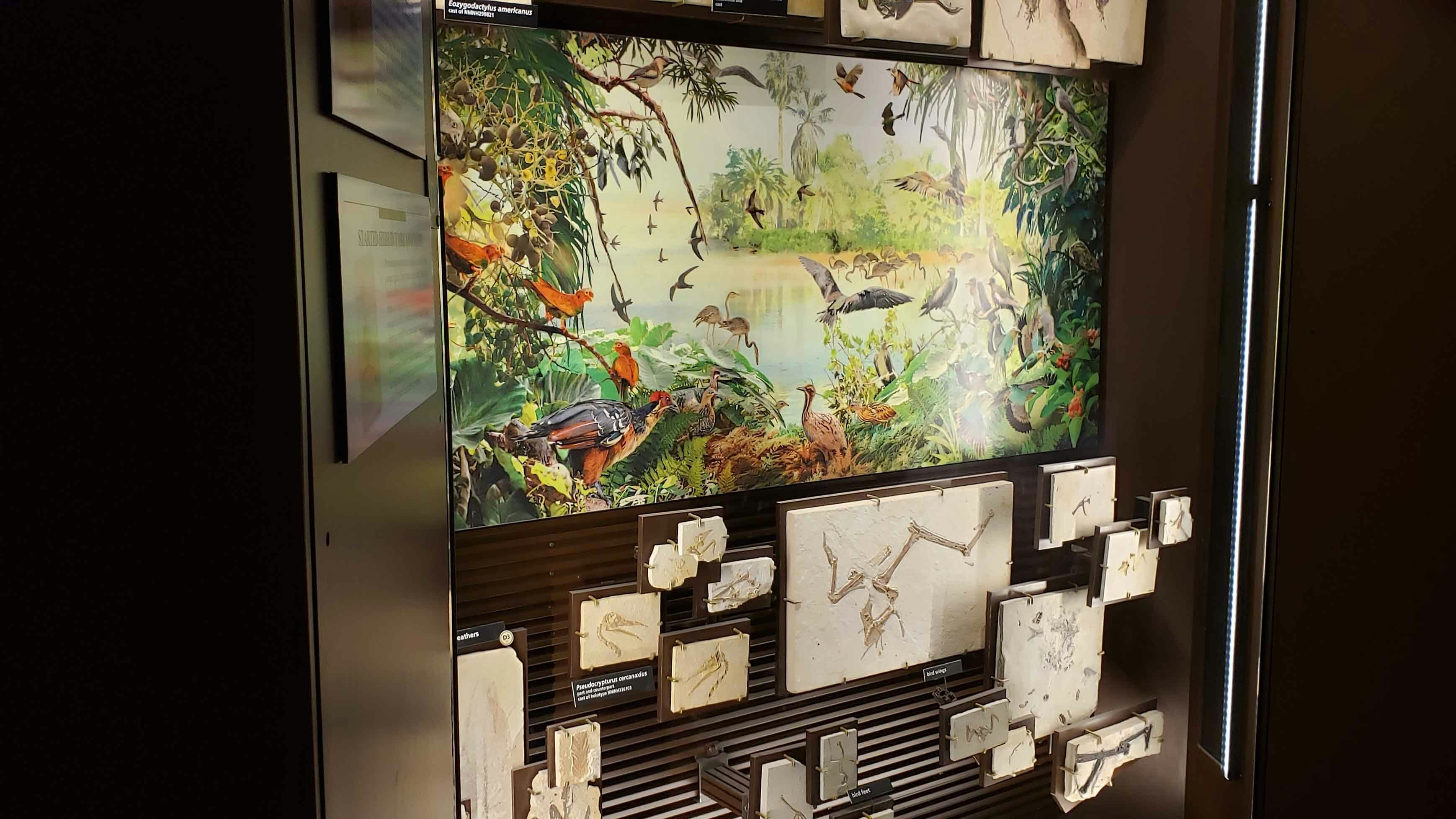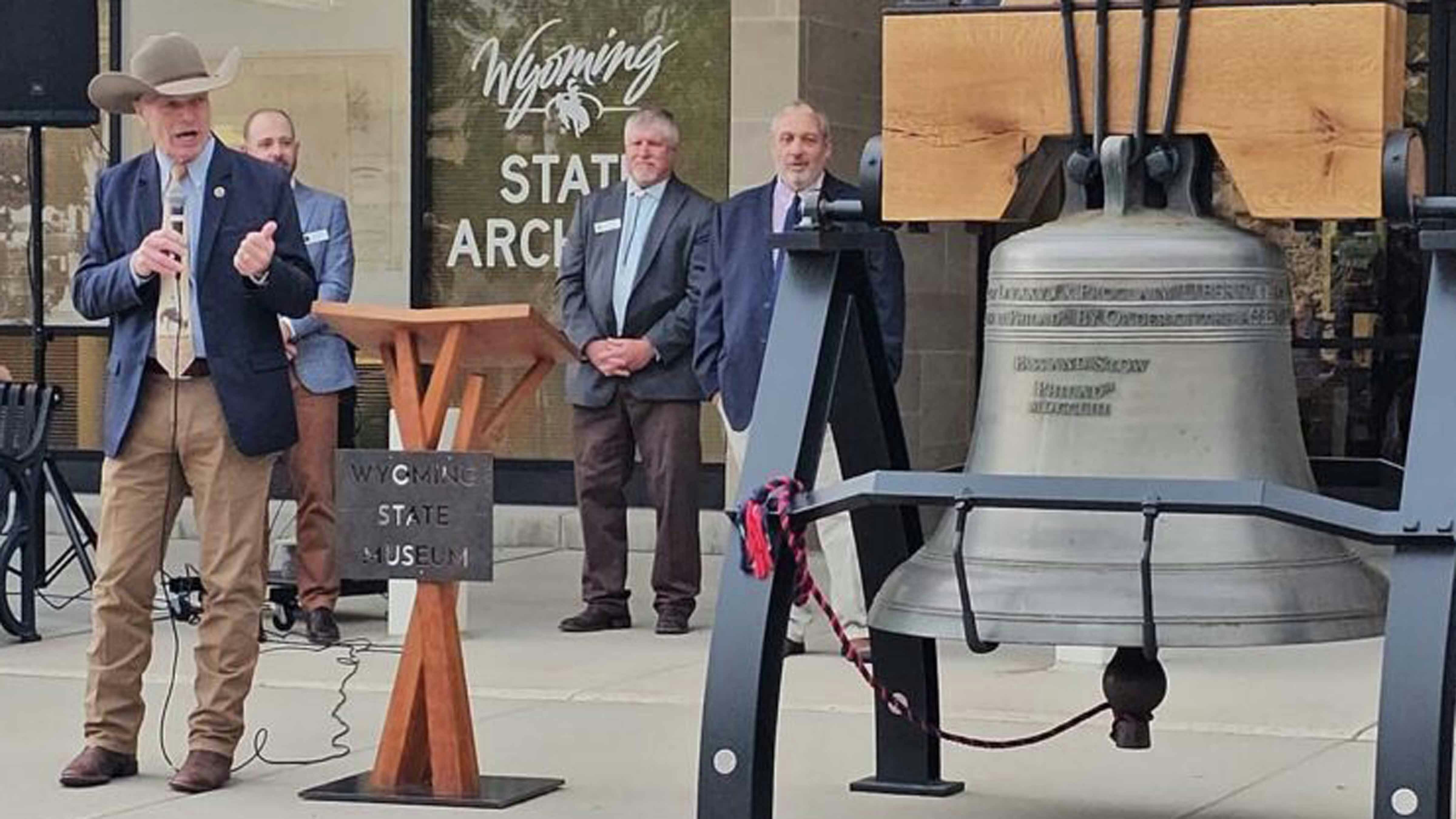KEMMERER — Growing up, Fossil Butte paleontology technician Gaetano Palazzo had a triceratops toy he wouldn’t let go of.
“I was into dinosaurs like, literally, since the day after I was born,” he told Cowboy State Daily. “When I was brought home, I was given like this toy Triceratops, and I was just so infatuated with it I would play with it every day. It was like my favorite thing in the whole world.”
When he got old enough to read and write, he spent all his time reading about dinosaurs and triceratops.
But today, as a ranger for Fossil Butte National Monument, he’s got a new love in the paleontological world.
Now it’s all about insects.
“In growing up, I’ve just kind of realized that there’s so much more to the natural world than just dinosaurs,” he said. “And I think the real goal of paleontology, as I’ve come to realize as I’ve gotten older, is piecing together basically the entirety of the world throughout the entirety of Earth’s history as best we can.”
Palazzo, when he was given a choice between Fossil Butte National Monument and the Rocky Mountain Dinosaur Resource Center, said he ultimately had to go with Fossil Butte.
That’s because Wyoming’s aquarium in stone has yielded a diversity of insects and other species that’s unparalleled in the world.
That draws hundreds of tourists to Kemmerer every year to find fossils or view them at the Fossil Butte National Monument’s visitor center, where three-dimensional simulations of fossil fish swim around in an ancient lake, and thoughtful diorama and artist illustrations bring to life an incredible diversity of life from the Eocene lake that existed here 52 million years ago.
Untapped Potential
While other aquariums captured in stone exist in the world, few put together the abundance and world-class quality of Kemmerer’s Green River formation, which is 25,000 square miles with literally millions of layers of flat, fossilizing stone, Palazzo said.
One fossil lake might be abundant but have mostly specimens whose pieces are too scattered for study, while another might have remarkably well-preserved specimens that are easy to study, but too few and far between.
Kemmerer, however, puts both things together. The fossils here are so abundant that almost every layer turns up something, even if it’s just another knightia or some fossilized fish poop, and most of the time they are articulated specimens. That means the bones are still largely intact, as they would have been when the animal was living.
That makes Kemmerer’s fossil lake beds a resource that’s unparalleled in the world, Palazzo said.
“We have the best understanding of the Paleo environment here than anywhere else in the world,” he told Cowboy State Daily. “Because the fossils, I mean not only the quality, but also like the diversity and abundance. We just find so many different things. I feel like, you know, every year they find something like this that’s just a once-in-a-lifetime discovery.”
That’s what drew Palazzo to return to Fossil Butte National Monument this year, where he’s now a paleontology technician. Each day he’s getting the chance to find something new, something that’s never been discovered before in 50 million years.
A Bee Or Not A Bee
In fact, on a recent Saturday he believes he may have found something potentially brand new.
“I was up in our research quarry, and when we’re up there we’re basically quarrying for fish and we document everything that we find,” he said. “You know, like basically, the length in millimeters, what horizon it’s found in.”
That’s not just for research, but also for visitor engagement so people get a chance to see real live science happening at the center.
“Just by chance, I actually had a big crowd of visitors there,” he said. “And just by chance, I lift this slab up, and there it is, and I was like, ‘OK,’ because sometimes we’ll find a lot of what’s called coprolites, you know, fossilized poop.”
But on closer inspection, what Palazzo found wasn’t fossilized fish poop at all. This time, it was the body of an insect, one that looks awfully similar to that of a honeybee.
If that proves to be the case, it will be the third bee fossil ever found in Kemmerer’s world-famous fossil lake. And, if that’s the case, there’s a better-than-average chance it’s a new species.
If that proves out, Palazzo will get the chance to name the bee since he’s the one who discovered it. He said he would likely name it after one of his science teachers who he felt was particularly influential.
“This is easily the coolest thing I’ve ever found in my career,” Palazzo said.
The find will be examined by the center’s paleontologist to determine how to proceed and whether it’s a bee or something else.
“This one may not be well preserved enough for formal description,” Palazzo said. “Because based on this, I don’t see any wing venation or really defined bodily characteristics.”
Nonetheless it’s a cool find, Palazzo said, and it has lit a fire for him when it comes to helping describe all of the insects found in Kemmerer’s fossil lake beds.
“That’s part of my career goal,” he said. “I’d like to describe all of the insects that are here.”
Tourists Help Build Exhibit Of A Lost World
While most of the fossils found in Kemmerer’s fossil lake beds every year are the small, herring-like, bony fish called knightia, Fossil Butte National Monument has an incredible diversity of plants, mammals, birds, insects, seeds, reptiles and more on display in a gallery that is small, but a true gem.
Behind each collection of fossils, dioramas or artist illustrations depict the creatures these fossils represent in a realistic setting. Sounds have been added to the gallery as well, helping a visitor feel as if they’ve been transported to a world that lived and breathed 52 million years ago.
Paleontologists, meanwhile, can be seen on site working to prepare fossils that have been found in the quarries and could eventually be displayed in the gallery. The demonstrations offer a fascinating glimpse into the science that’s helping recreate this lost ancient world.
Nearby, a virtual reality display offers a chance to see three-dimensional fish, swimming through an aquarium, based on which fossil guests select.
Even the bathroom in this small gallery offers a unique exhibit for guests. It’s a collection of all the different coprolites — fossilized poop — that have been found at the site, along with explanations of each type of poop. That has people in the bathroom laughing and taking pictures of the display.
The incredible diversity at Fossil Butte National Monument hasn’t been built solely by career scientists, either. It’s had a great deal of help from tourists, who every year are attracted to a little game of fossil chance.
There are a variety of private quarries where tourists can “fish” for their own fossils, as well as a couple that lease areas from the state.
The Ulrich Fossil Gallery was among the very first of these and has a long legacy in the Kemmerer area. Visitors to the Ulrich Fossil Gallery work with trained guides who teach tourists the proper way to uncover fossils and what to look for to know that they’ve found something special.
“With the commercial quarries, because we have that mutual kind of understanding with each other, you know, we’re able to kind of like overturn more rock and discover more by working together,” Palazzo said. “And if we find a gajillion knightia every year, and visitors want to take one home as a souvenir, you know, that’s not going to negatively impact the science.”
The fun of flipping over rocks and finding the unexpected keeps many tourists coming back year after year after year.
There’s even a guest book of some of the finds tourists have donated to the center for further study.
“I’ve talked to a couple of visitors where and, you know, they go dig their fossils and usually they just find fish,” he said. “But they just keep coming back, hanging on, you know, what if I find a stingray this time, or what if I find a bird? It’s that sense of like, you know, what could be between those rock layers, and you just don’t know until you lift it up.”
Renée Jean can be reached at renee@cowboystatedaily.com.
















